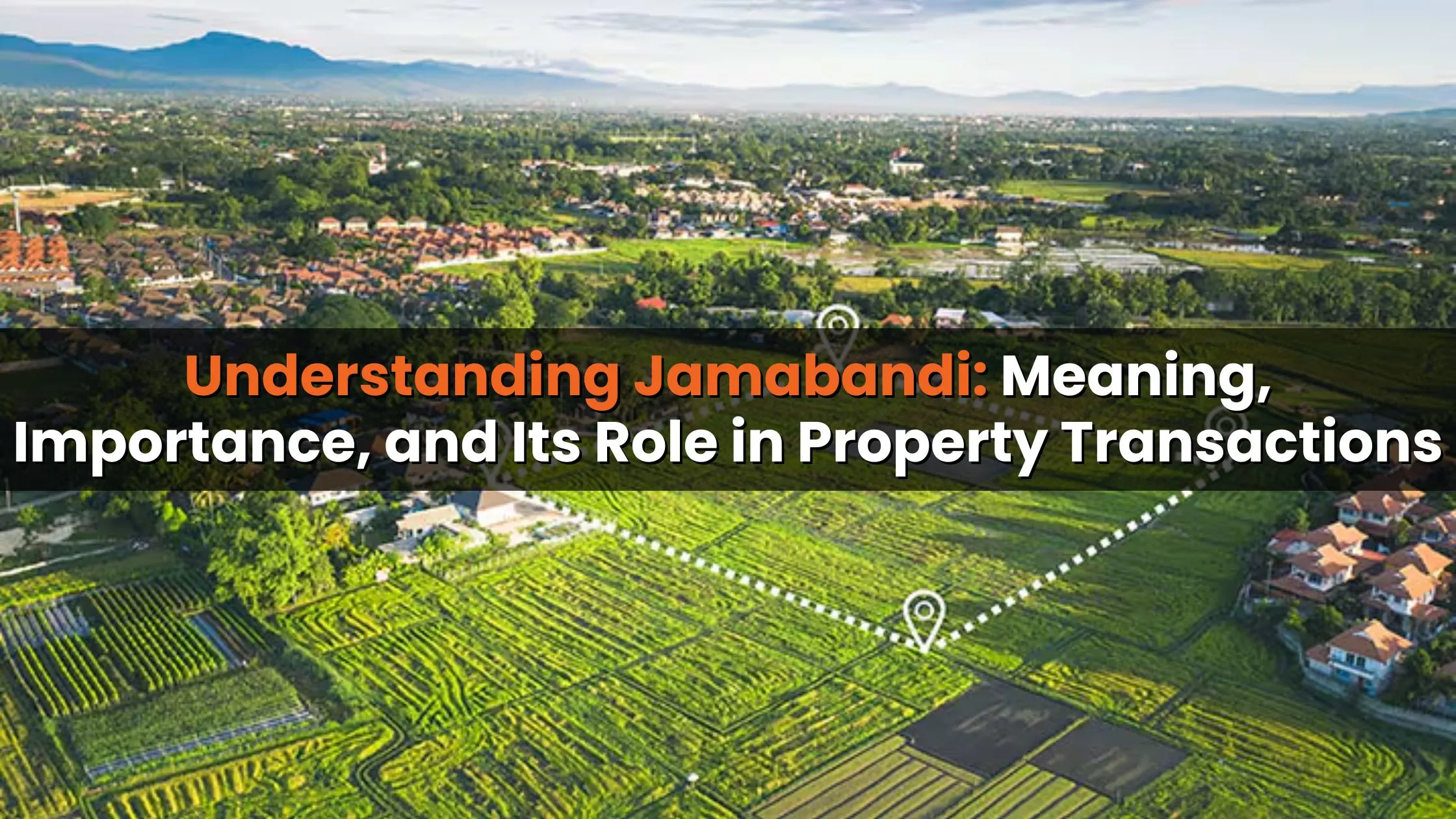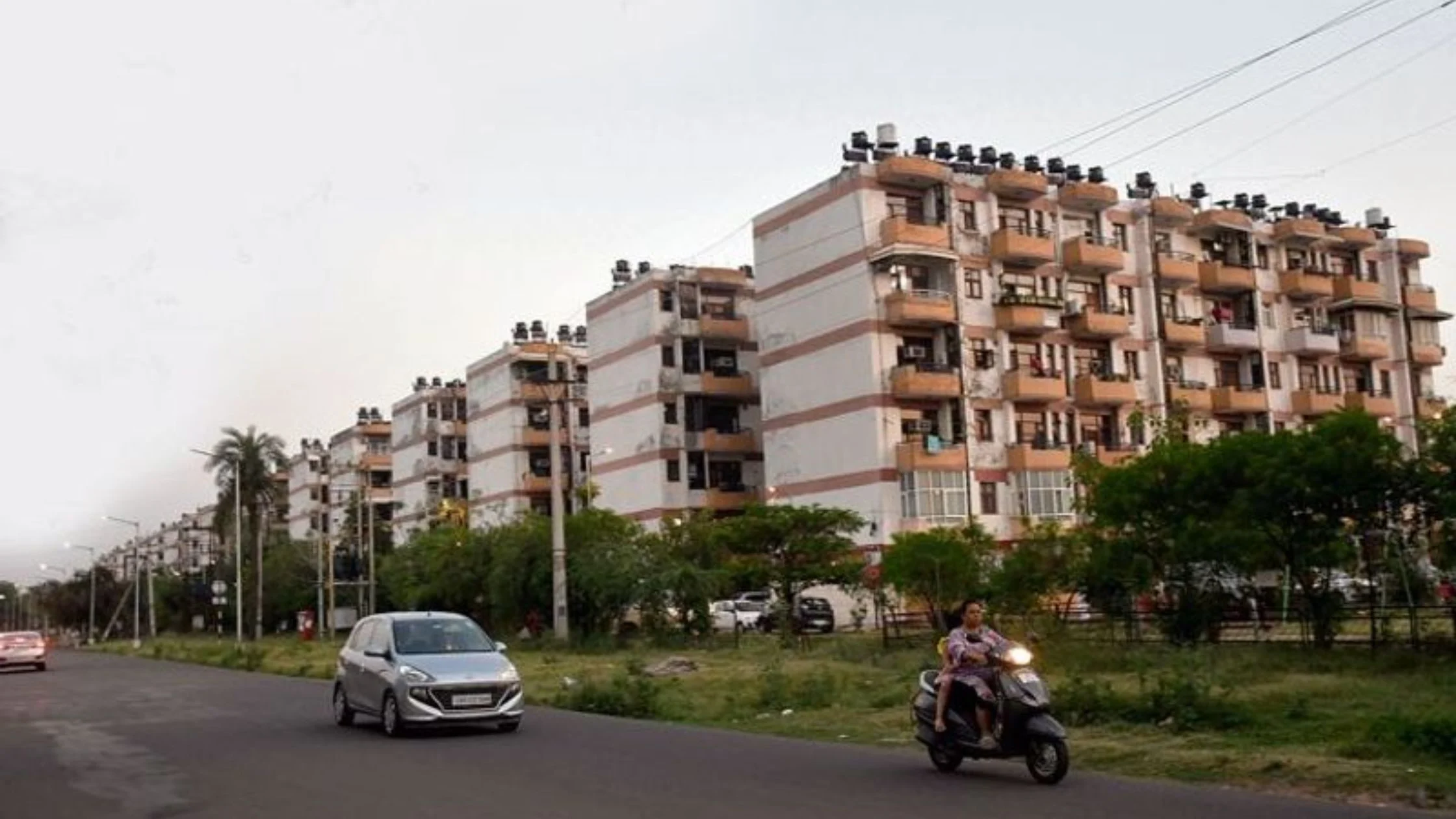Table of Content
- What is Jamabandi?
- Significance of Jamabandi in Real Estate
- Uses of Jamabandi in Property Transactions
- Steps to Obtain Jamabandi
- Documents Required for Jamabandi
- Verifying the Authenticity of Jamabandi
- Correcting Errors in Jamabandi
- Benefits of Jamabandi
- Challenges and Concerns with Jamabandi
- Legal Terms Associated with Jamabandi
- Conclusion
In India, land ownership is usually linked to traditional, historical, and economic beliefs. Proper documentation of property records is necessary for protecting ownership of property, fairly conducting transactions, and avoiding disputes. One of the key documents of the Indian land revenue system is the Jamabandi, popularly known as the Record of Rights (RoR). This article discusses what Jamabandi means, its importance and other practical aspects, thereby giving an overview of Jamabandi to land owners, purchasers, and property professionals.
What is Jamabandi?
Jamabandi or Record of Rights (RoR), is the land revenue document and an official record of ownership, use, tenancy and other transactions made over the land. It is kept and maintained by the Revenue Department of the state. This document helps locate historical records of ownership, all the way back usually, several generations.
What is contained in a Jamabandi?
- Owner Name: the current legal owner(s) of the land.
- Description: the size, type, and boundaries of the land.
- Use: how the land is currently being used (e.g. agricultural, residential, commercial).
- Tax/Revenue Obligations: details any encumbrances, loans, taxes on the land.
- Tenancy or Leasehold History: details the tenancy or leasehold and rights if applicable.
Jamabandi is a critical reference for property transactions, conflict resolution, and government programs in terms of transparency.
Also Read: Is Your Property Under Government Acquisition? Here's How to Find Out
Significance of Jamabandi in Real Estate
Jamabandi plays a crucial role in the Indian real estate scene, impacting various facets of property management and ownership. Here’s why it’s so important:
1. Legal Proof of Ownership:
Jamabandi acts as a legal document that confirms and verifies land ownership. It’s essential during property sales, purchases, and transfers, ensuring that the seller has the rightful claim to the property.
2. Facilitating Government Programs:
Landowners often rely on Jamabandi to tap into government benefits, like agricultural subsidies, loan waivers, or tax relief programs.
3. Preventing Fraud:
Thanks to its detailed and official nature, Jamabandi helps minimize the risk of fraudulent transactions, offering clarity and security in property dealings.
4. Dispute Resolution:
As a historical record, Jamabandi is invaluable for resolving disputes over ownership, boundaries, and tenancy. It serves as legal and historical evidence in courts or revenue offices.
5. Digitization for Accessibility:
Many states, including Punjab, Haryana, Rajasthan, and Bihar, have taken steps to digitize their Jamabandi records, making them easily accessible online. This shift has greatly reduced manual processes and delays in obtaining records.
Uses of Jamabandi in Property Transactions
Jamabandi plays several key roles in property transactions:
- When it comes to buying or selling property, it helps establish who owns what and confirms that there are no legal issues tied to the property.
- For loan applications, banks and financial institutions typically ask for Jamabandi to process loans secured by property.
- Landowners also rely on it to check and pay their land revenue taxes.
- Additionally, Jamabandi makes it easier to transfer ownership in situations like inheritance or gifting.
Steps to Obtain Jamabandi
Offline Process:
- Visit the Tehsil Office:
Apply for Jamabandi at the local revenue office with necessary documents. - Submit Application:
Provide identification proof, property ownership documents, and tax receipts. - Collect the Record:
Upon verification, the office issues a certified copy of the Jamabandi.
Online Process:
- Log in to the Portal:
Many states have dedicated Jamabandi portals where users can register and log in. - Enter Details:
Provide details such as district, village, Khata number, and survey number. - Download the Record:
View and download the Jamabandi for official use.
Documents Required for Jamabandi
To access or update Jamabandi, the following documents are usually required:
- Identity Proof: Aadhaar Card, Passport, or Voter ID.
- Ownership Proof: Sale deed, mutation certificate, or land registration documents.
- Tax Receipts: Payment history of land revenue.
- Khata Number: A unique identification for the property.
Verifying the Authenticity of Jamabandi
Making sure that Jamabandi is authentic is crucial to avoid any fraudulent dealings or disputes. Here’s how you can verify the document:
- Cross-Check Records: Look for any discrepancies between online and offline records.
- Check Legal Stamps: Make sure to verify official seals, QR codes, and digital watermarks.
- Examine Mutation Entries: Confirm that ownership transfers are accurately recorded.
- Review Historical Data: Take a close look at past sale deeds and tenancy records for any inconsistencies.
Correcting Errors in Jamabandi
Errors in Jamabandi can spark disputes or even legal issues. To tackle any inaccuracies, follow these steps:
- First, check the Jamabandi record, whether online or offline, to spot any discrepancies.
- Next, gather your supporting documents, like the sale deed and tax receipts, and submit them to the local revenue office.
- The authorities will then verify everything and make the necessary updates to the records.
- Finally, make sure to get a corrected and updated copy for your future reference.
Benefits of Jamabandi
- Legal Security: It safeguards property owners from claims and disputes brought by third parties.
- Transparency in Transactions: It guarantees that property transactions are straightforward and free from fraud.
- Loan Applications: It serves as a necessary document for obtaining financial support.
- Confidence for Buyers: It assures legal and undisputed ownership.
- Dispute Resolution: It helps speed up the resolution of ownership conflicts.
Also Read: Understanding a Property Sale Agreement: Definition and Key Details
Challenges and Concerns with Jamabandi
Despite its importance, Jamabandi faces certain challenges:
- Outdated Records: In some cases, manual records are not updated regularly.
- Access Issues: Rural areas may lack the infrastructure for online access.
- Training Gaps: Revenue officials may require better training for efficient record management.
- Legal Discrepancies: Conflicting entries in mutation records can lead to ownership disputes.
Legal Terms Associated with Jamabandi
- Mutation:
Refers to the legal transfer of property ownership due to sale, inheritance, or gifting. - Patta:
A certificate issued as proof of land ownership. - Adangal:
A comprehensive record detailing the land's ownership, usage, and cultivation.
Conclusion
Jamabandi, often referred to as the Record of Rights (RoR), is a key element of India’s land revenue system. It plays an essential role in promoting transparency and ensuring legal security in property transactions. This document is not just important for its legal backing; it also helps in resolving disputes and making it easier for people to access government benefits. For landowners and buyers navigating the sometimes complicated world of real estate, understanding Jamabandi records is crucial for safeguarding ownership and fostering trust in the market. Whether you’re checking these records online or offline, this vital document equips everyone involved to make informed and secure property decisions.
Follow AquireAcers Whatsapp Channel to Stay Updated With The Latest Real Estate News






_1765522271.webp)

_1765444636.webp)

Ans 1. Jamabandi, also called the Record of Rights (RoR), is an official land revenue document that records ownership, use, tenancy, and other transactions related to a specific land parcel. It is maintained by the state Revenue Department.
Ans 2. Jamabandi serves as legal proof of land ownership, helps prevent fraud, facilitates property transactions, assists in dispute resolution, and is essential for accessing government schemes related to land.
Ans 3. It contains the owner’s name, land description (size, boundaries), current land use, tax or revenue obligations, and tenancy or leasehold history if applicable.
Ans 4. You can apply offline at your local Tehsil or Revenue office with required documents or access it online via respective state land record portals by entering property details.
Ans 5. Typically, you need identity proof (Aadhaar, Passport), proof of ownership (sale deed, mutation certificate), tax receipts, and the Khata number of the property.
Ans 6. Check for consistency between online and offline records, verify official stamps or QR codes, review mutation entries, and examine historical ownership data.
Ans 7. Report discrepancies to the local revenue office with supporting documents. The authorities will verify and correct the records, after which you can obtain an updated copy.
Ans 8. It confirms rightful ownership, prevents fraudulent sales, aids in legal transfers, and is often required by banks for loan approvals.